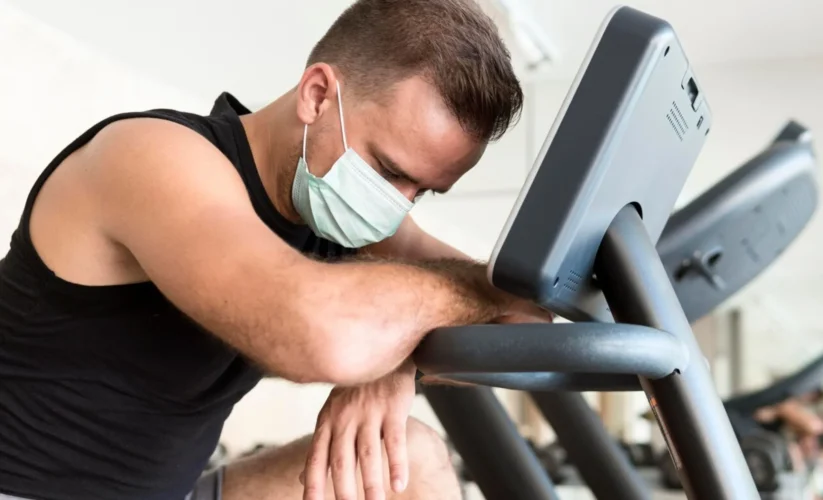
How To Speed Up Muscle Strain Recovery?
How to speed up muscle strain recovery? Though muscle strains can feel annoying, you can heal faster. The RICE method is a nice beginning to lessen inflammation and encourage recovery. Yet, you may improve recuperation by consuming foods abundant in proteins, engaging in light exercises such as walking or swimming and getting enough sleep.
Make sure to look out for your body’s signals and come back to exercise gradually to prevent injuries again. You can try using these tactics together, then you will surely recover your optimal condition quicker.
The RICE Method: Foundation for Recovery
The RICE method might be our answer to “how to speed up muscle strain recovery” because it is fundamental in the beginning stages of muscle strain healing.
- It is important because, when you rest, your body can fix the muscle tissues that were hurt. Avoid things that make the strain worse and concentrate on giving the injured area a break.
- Use ice packs covered with a towel on the injured spot for 15-20 minutes, several times per day. This helps to decrease swelling and pain, encouraging recovery.
- Apply a compression bandage or piece of clothing, making sure it fits well without blocking blood flow.
- Lift the hurt limb higher than your heart level. This can assist in managing inflammation and boosting fluid drainage from that part of your body.
Using the RICE method within the initial 24-48 hours after experiencing a muscle strain can greatly enhance your healing schedule.
Nutritional Strategies for Healing

So you wanna know about how to speed up muscle strain recovery other than the RICE method. A diet that is balanced and contains necessary nutrients greatly affects the process of healing from muscle strain. The reason for this is:
- Protein: Protein helps to build and fix muscle tissue. You should consume about 1.6-2.5 grams of protein for each kilogram of your body weight every day. Include lean meats, fish, eggs, beans, nuts and seeds in your meal plans for this purpose.
- Keep Hydrated: Water brings nutrients to your muscles and removes waste. Make sure you drink enough all day, particularly during recovery time.
- Powerful Foods Against Inflammation: Some foods have the ability to fight inflammation and can help in decreasing pain and swelling. Add fruits such as berries and cherries, vegetables with good antioxidants like leafy greens or bell peppers, as well as omega-3 fatty acids from oily fish.
Movement and Exercise for Recovery
There is also a simple answer to “how to speed up muscle strain recovery” which is exercise. Though rest is important, not doing anything at all can impede muscle recovery. Mild movement or exercise might help in these manners:
Encourages Blood Flow: Doing light activities such as walking or swimming promotes more blood to flow towards the hurt part, carrying important nutrients for healing and taking away waste substances.
- Maintaining Flexibility: Gentle stretches can help to prevent stiffness and keep the affected muscle’s motion range, thus diminishing future strain chances.
- Slowly Back to Power: After the first pain decreases, bringing in bodyweight exercises or light resistance training could assist in rebuilding strength and stopping muscles from withering away.
- Hear what your body says: Begin slowly with little uneasiness and step by step enhance activity as pain permits.
- Focus on Gentle Movement: Choose low-impact exercises like walking, swimming, or yoga.
- Stretching is Very Important: Do smooth and still stretches for the hurt muscle, keep each stretch for 15-30 seconds.
- Take It Easy: Give yourself plenty of time to recover and heal before getting back into demanding tasks.
Additional Recovery Techniques
There are also additional methods of “how to speed up muscle strain recovery” which might be suitable for you. Think about these extra methods for recovery, not just the main ones: Sleep is crucial in fixing muscles so try to get 7-8 hours every night. Massage therapy can help with relaxation, blood flow and breaking down scar tissue. Compression garments give specific support and decrease swelling.
When swelling goes away, using heat therapy can help with healing and flexibility. You may use pain relievers that do not need a prescription to handle the discomfort, but for long-term use, ask your doctor.
Recovery for Specific Muscle Strains
So now you know “how to speed up muscle strain recovery” but what about specific muscle strain. Recovery may slightly differ depending on the specific muscle strained. For common injuries like hamstring strains, you might need to do more hamstring stretches and exercises that focus on the posterior chain.
For calf strains, it can help doing exercises to enhance ankle mobility and make your calves stronger too. The suggestions for healing back strains frequently highlight core strengthening and correct posture methods. A consultation with a healthcare expert or physiotherapist can give you a plan of recovery that is specially made for your particular injury.
Preventing Muscle Strains
Strains in muscles can be stopped if you take action beforehand. Always do warm-up before exercise, which includes active stretches and light cardio to ready your muscles for activity. Do cool-down with static stretches after exercising to help your body return to a resting state and decrease muscle tightness.
When you are lifting weights, it is very important to do it correctly so that no harm happens. Keep your core tight and sustain good posture while doing exercises. By making these preventive actions part of your habit, you can greatly lessen the possibility of muscle pulls while keeping yourself functioning at top capacity.
If you still have doubts about “how to speed up muscle strain recovery” you can read again. Strains in muscles can slow you down, yet if handled correctly, your recovery may be quick and effective.





